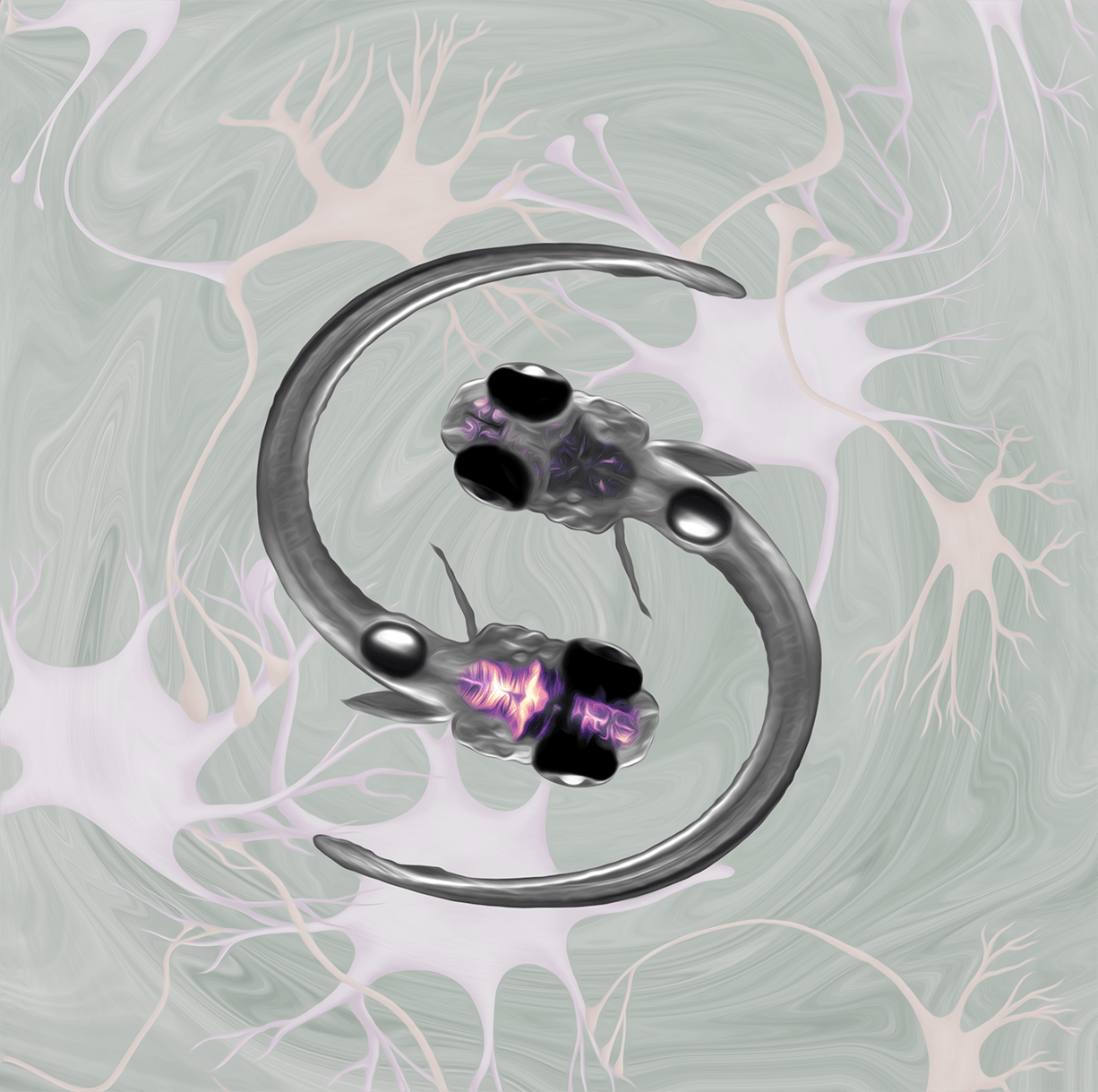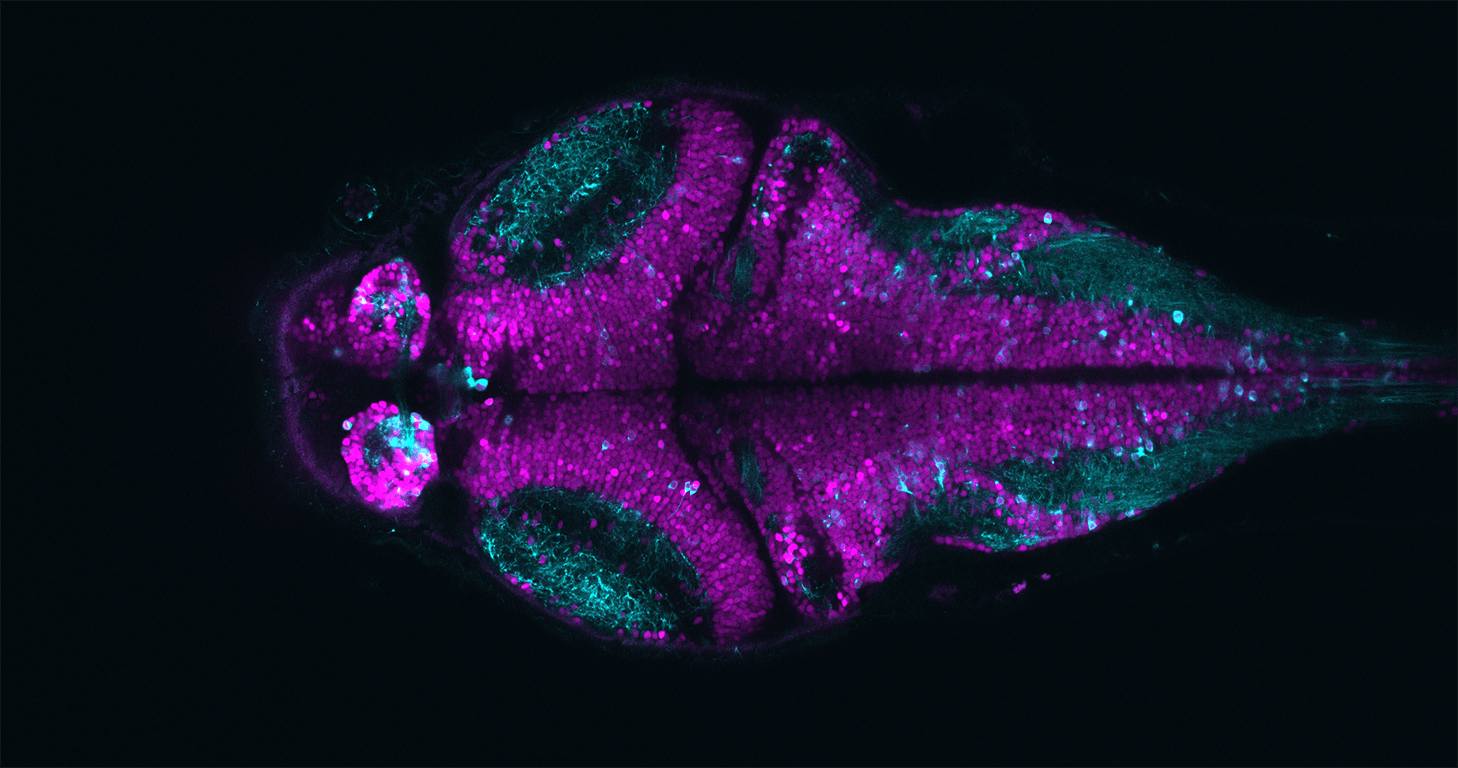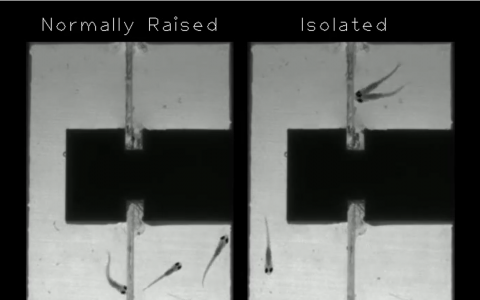
How do astrocytes in the brain tell the body when to give up?
An interview with Dr Yu Mu, Institute of Neuroscience, Chinese Academy of Sciences, conducted by April Cashin-Garbutt
Knowing when to give up is crucial for survival. But how does the brain enable the body to switch behaviours when an action isn’t achieving its goal? To understand this process, Dr Yu Mu studies larval zebrafish that have transparent brains containing around 150,000 neurons. In his recent SWC Virtual Seminar, Dr Mu outlined his research showing the importance of another type of cell in the brain called astrocytes. In the following Q&A, Dr Mu shares how astrocytes modulate behavioural states in zebrafish, thereby controlling when they give up.
How much is currently known about the way the brain enables animals to adapt to changes in their environment?
Compared with other questions in neuroscience, adaptive behaviour is not very well-studied. This is because scientists usually probe the brain based on sensory inputs, and in adaptive behaviour, changes to sensory input are not the only parameters that change neural function. Voluntary, behavioural-induced environment change and internal state drift are parameters that are difficult to control in experiments.
Activation of astrocytes (left) and neurons (right) in zebrafish brain during closed-loop and open-loop swimming. Credit: Dr Yu Mu, Dr Davis V Bennett, Dr Misha Ahrens
Why do you focus on zebrafish in your research?
To understand the brain, we need to study multiple levels from molecules, to cells, to circuits, to brain areas that make up the whole brain. Zebrafish allow me to bridge all of these levels in my research and I find that very satisfying.
Research in zebrafish opens up opportunities to answer questions we don’t yet understand. Previously neuroscientists typically focused on one brain area or condition. But the next step is to understand how the different modules in the brain work together. This is a big challenge for the neuroscience community, and I hope by focusing on zebrafish I can help understand computations in the whole-brain scale and lead us to new discoveries.
Can you please outline how you identified a neural pathway underlying a behavioural switch in zebrafish?
There were two key steps and both were unexpected. I was carrying out an experiment at the behavioural level where one of the controls was to exclude the impact from the visual experience by replaying a previous visual experience. During this control experiment I noticed something very interesting. When I replayed the previous visual experience, the zebrafish started to swim very differently and suddenly stopped swimming at all. I wasn’t sure this fish would ever come back to swim again or not. A few minutes later, the animal started swimming again. I decided to study this interesting phenomena to try to understand the neural basis of behavioural switch.
By monitoring the brain during behavioural transitions, we found lots of neurons correlated with the transition at different stages. The next step was to do perturbations, however when we pertubated the group of neurons that corresponded to the transition, it didn’t have a robust effect on changing their behavioural states. For example, when I removed the forebrain, the animals still gave up.
By accident, when colleague Davis was screening transgenic fish, he noticed that when a zebrafish was stuck in a place in the water where it could not swim out, astrocytes in the brain became very active. This was an unexpected finding and we decided to look at this activity under the microscope. It became clear that these astrocytes were even more correlated and could predict the behaviour better than any of the neurons. We then proceeded to find all the components along the circuit to identify the neural mechanism.
Were you surprised to find that astrocytes modulate behavioural states in zebrafish?
Yes, it was very surprising. After we saw the correlation, we did causality experiments using optogenetics and saw that activating the astrocytes silenced the behaviour very robustly.

Illustration of zebrafish swimming, with neurons and astrocytes in the background. Inside the zebrafish brains we see astrocytes and neurons light up in the left and right fish respectively. Credit: Julie Kuhl
How do you think neurons and astrocytes interact to alternate between active and passive behavioural states?
You can think of astrocytes like a sponge that accumulates information. For example, if an action is not achieving its goal – once, twice, three times – then this information builds up in the astrocytes. The neurons are feeding the astrocytes this information along with other types of information too.
Astrocytes are larger than neurons and many are interconnected by gap junctions forming a community. This community occupies a territory so they can sense different cues, such as failure or success cues, and bring this information together to decide whether to stay in the active state or move to the passive state. The astrocytes have to accumulate enough evidence to induce a transition.
In addition to exploring how neurons talk to astrocytes, we have also used optogenetics and pharmcology to understand how astrocytes communicate with neurons. From our initial data it appears that there may be multiple ways astrocytes can talk to neurons. For example, some astrocytes release ATP to activate receptors on some neurons, but other neurons don’t respond to ATP. Usually neurons release only one type of molecule or neuromodulator, whereas astrocytes may release multiple types of molecule to communicate with neurons.
Do you think astrocytes are likely to be involved in modulating other behaviours?
Yes, I think astrocytes are likely to impact multiple other pathways. They show potent modulation of swim behaviour in this area, but astrocytes also exist in other areas of the brain such as sensory areas. Neurons play different roles in different areas of the brain, but I think astrocyte activation may be able to modulate different neural computations and behaviours at relatively long-time scales. We have observed modulation of a sensory response, but we need to verify this modulation is coming directly from the astrocytes.

Neurons in zebrafish brain. Credit: Dr Yu Mu, Dr Misha Ahrens
What is the next piece of the puzzle your research is going to focus on?
I plan to continue to work on zebrafish and explore more behavioural paradigms to fully challenge the brain and get new ideas about how the different parts work together.
I am also part of a large project involving several labs at the Institute of Neuroscience to map the whole brain projectome. This will be a great resource to combine function and structure. I will use my expertise, and work with computational neuroscientists, to fully digest this whole brain level functional and structural information. Hopefully this combination will give us insight into both understanding the animal brain and also how to design artificial intelligence in a more efficient way such as for multitasking.

About Dr Yu Mu
Dr Yu Mu is the Lab Head of Sensorimotor Transformation. He received his B.S. degree in Biochemistry from Nanjing University (2006) and his Ph.D. degree in Neurobiology from the Institute of Neuroscience, Chinese Academy of Sciences (ION) in 2013. After completing his Ph.D., Dr Mu conducted his postdoctoral research with Dr Misha Ahrens at Janelia Research Campus, HHMI (2013 - 2020). Dr Mu joined ION in 2020 as a Principal Investigator in June 2020. His research focuses on understanding how the circuits across multiple brain regions jointly give rise to neural computation and generate behaviours.
